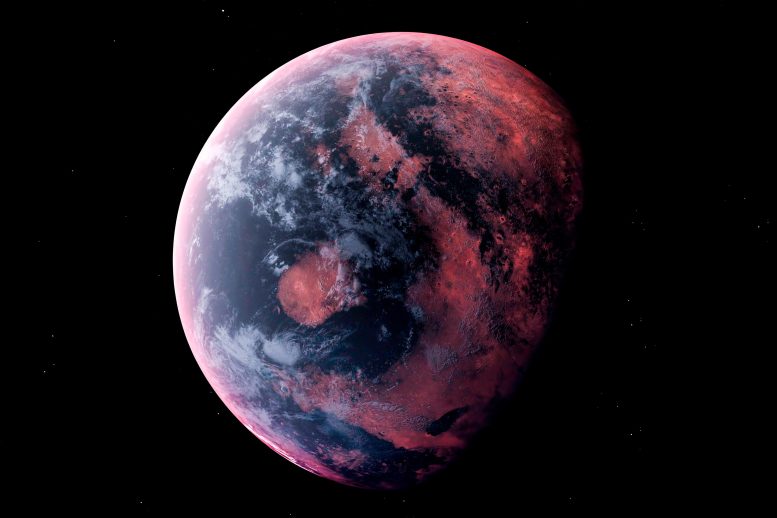
4 billion years ago, the Earth was composed of a series of magma oceans hundreds of kilometers deep.
Earth hasn’t always been a blue and green oasis of life in an otherwise inhospitable solar system. During our planet’s first 50 million years, around 4.5 billion years ago, its surface was a hellscape of magma oceans, bubbling and belching with heat from Earth’s interior.
The subsequent cooling of the planet from this molten state, and the crystallization of these magma oceans into solid rock, was a defining stage in the assembly of our planet’s structure, the chemistry of its surface, and the formation of its early atmosphere.
These primeval rocks, containing clues that might explain Earth’s habitability, were assumed to have been lost to the ravages of plate tectonics. But now, my team has discovered the chemical remnants of Earth’s magma oceans in 3.7 billion year-old rocks from southern Greenland, revealing a tantalizing snapshot of a time when the Earth was almost entirely molten.
Hell on Earth
Earth is the product of a chaotic early solar system, which is believed to have featured a number of catastrophic impacts between the Earth and other planetary bodies. The formation of Earth culminated in its collision with a Mars-sized impactor planet, which also resulted in the formation of Earth’s moon some 4.5 billion years ago.
These cosmic clashes are thought to have generated enough energy to melt the Earth’s crust and almost all of our planet’s interior (the mantle), creating planetary-scale volumes of molten rock that formed “magma oceans” hundreds of kilometers in depth. Today, in contrast, Earth’s crust is entirely solid, and the mantle is seen as a “plastic solid”: allowing slow, viscous geological movement a far cry from the liquid magma of Earth’s early mantle.
As the Earth recovered and cooled after its chaotic collisions, its deep magma oceans crystallized and solidified, beginning Earth’s journey to the planet we know today. The volcanic gases which bubbled out of Earth’s cooling magma oceans may have been decisive in the formation and composition of our planet’s early atmosphere – which would eventually support life.
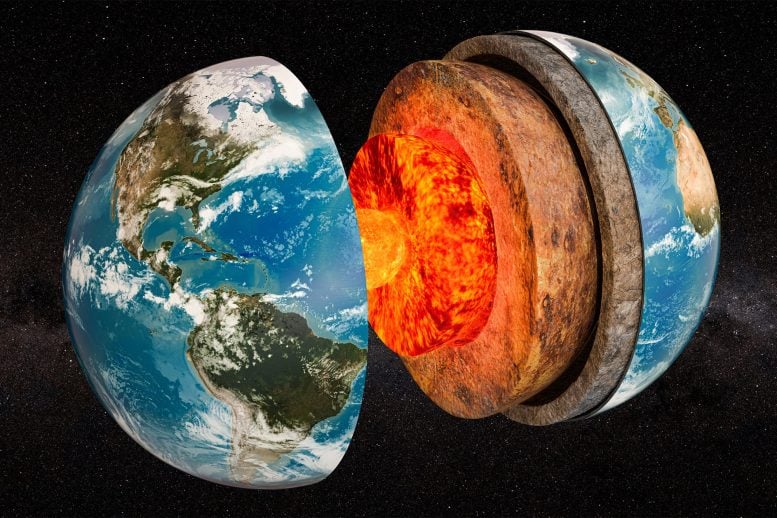
The Earth is now composed of the inner core, the outer core, the lower mantle, the upper mantle, and the crust.
Geological search
Finding geological evidence for the Earth’s former molten state is extremely difficult. This is because magma ocean events are likely to have taken place over 4 billion years ago, and many of the rocks from that period of Earth’s history have since been recycled by plate tectonics.
But while rocks from this period no longer exist, their chemical traces may still be stored in Earth’s depths. Solidified crystals from Earth’s cooling period would have been so dense that they’d have sunk to the base of Earth’s mantle. Scientists even believe that these mineral residues may be stored in isolated zones deep within Earth’s mantle-core boundary.
If they do exist, these ancient crystal graveyards are inaccessible to us – hiding far too deep for us to take direct samples. And if they were to ever rise to the Earth’s surface, the magma ocean crystals would naturally undergo a process of melting and solidifying, leaving only traces of their origins in the volcanic rocks that make it to Earth’s crust.
Crystal clues
We knew Greenland would be a good place to search for these traces of Earth’s molten past. Our samples originate from the Isua supracrustal belt in southwestern Greenland, which is a famous area for geologists. At first glance, Isua’s rocks look just like any modern basalt you’d find on the seafloor. But these rocks are some of the oldest in the world, believed to be between 3.7 and 3.8 billion years old.
On analyzing Isua’s rocks, we discovered unique iron isotope signatures. These signatures showed that the region of the mantle from which the rocks had formed had been subjected to very high pressure, over 700 kilometers (435 miles) below Earth’s surface. That’s exactly where minerals formed during magma ocean crystallization would have been located.
But if these rocks did indeed bear traces of crystallized magma ocean, how did they find their way to the Earth’s surface? The answer lies in how the Earth’s interior melts, producing volcanic rocks on the planet’s surface.
Melting rocks
When regions of the Earth’s semi-solid mantle heat up and melt, they rise buoyantly towards the Earth’s crust, ultimately producing volcanic rocks when the magma reaches the surface and cools. By studying the chemistry of these rocks on the surface, we can probe the composition of the material that melted to form them.
The isotopic makeup of Isua rocks revealed that their journey to Earth’s surface involved several stages of crystallization and remelting in the interior of the planet – a kind of distillation process on their way to the surface. But the rocks that emerged, located in present-day Greenland, still retain chemical signatures that connect them to Earth’s magma-covered past.
The results of our work provide some of the first direct geological evidence for the signature of magma ocean crystals in volcanic rocks found on Earth’s surface. Now, we’d like to understand whether other ancient volcanic rocks across the world can tell us more about Earth’s former magma oceans, or whether we’ve instead stumbled upon a geological oddity: more of a one-off clue.
If other volcanoes may have spewed similar geological artifacts, we might also look to modern eruption hotspots such as Hawaii and Iceland for further isotopic novelties that speak of Earth’s ancient past. It’s possible that more primordial rocks may be found in the future which could help us understand more about the Earth’s violent, magma-covered past.
Written by Helen M. Williams, Reader in Geochemistry, University of Cambridge.
This article was first published in The Conversation.![]()
For more on this study, see Traces of Earth’s Early Magma Ocean Identified in Greenland Rocks.

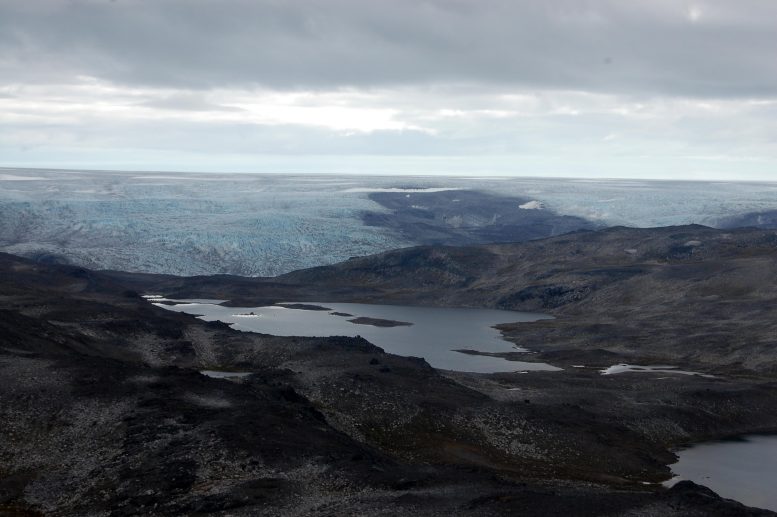

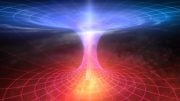



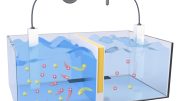


Be the first to comment on "Crystal Clues: Earth’s Early Magma Oceans Detected in 3.7 Billion Year-Old Greenland Rocks"